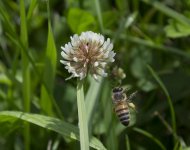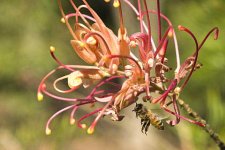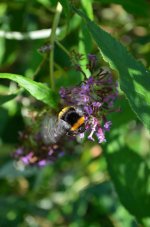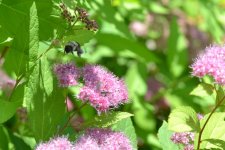Those little bees were going 100 MPH, and these are crummy pictures, I'm embarrassed to post them. But it is five minutes work which is only about the point of stopping the wings.
This used a SB-800 flash on the hot shoe. It was in bright sun, but the camera Exposure Compensation was set to -3 EV (to make it dark), and the flash compensation (on the flash body) was set to + 3 EV (to bring it back up brighter, but with flash). Otherwise, it was point&shoot.
The speedlight is called a speedlight because its duration is extremely short and fast, much faster than shutter speeds. Speedlight is a major motion stopping technique. Actual shutter speed was limited to flash sync (1/250 second here), but it is dark without the flash, so the shutter speed doesn't matter.
It was TTL, so I don't know flash power and speed, but it was low and fast. It was ISO 200 f/8, so Guide Number computes a 30 foot range then. But this was at only maybe four feet, and direct flash, so power was pretty low (meaning, flash was pretty fast). Recycle time was about immediate.






